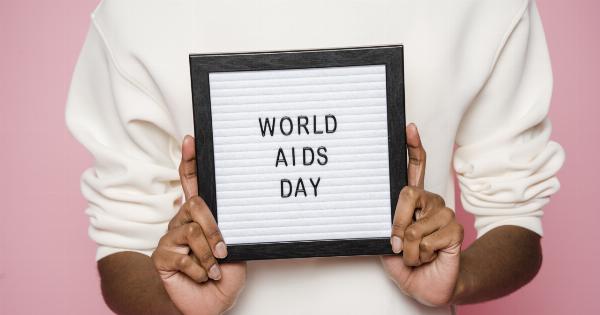AIDS, also known as Acquired Immunodeficiency Syndrome, continues to be a major global health concern. Despite significant advancements in prevention and treatment, young people are not as cautious as they should be when it comes to the spread of AIDS.
This lack of awareness and responsible behavior among the youth poses a serious threat to public health. In this article, we will explore the reasons why young people are not cautious of the spread of AIDS and discuss possible solutions to address this issue.
1. Lack of Comprehensive Sex Education
One of the key factors contributing to the lack of caution among young people regarding AIDS is the inadequate provision of comprehensive sex education.
Many educational systems around the world fail to provide age-appropriate and evidence-based sexual health education to students. This omission leaves young individuals ignorant about the risks associated with unprotected sex and how to protect themselves and their partners.
2. Stigma and Discrimination
Stigma and discrimination surrounding AIDS also play a significant role in discouraging young people from educating themselves about this disease.
The fear of being labeled or ostracized prevents individuals from seeking accurate information about AIDS and learning how to protect themselves. Addressing the societal stigma related to AIDS is crucial to empower young people to take necessary precautions.
3. Lack of Access to Healthcare Services
In many parts of the world, young people face barriers in accessing healthcare services, including HIV testing and counseling.
These barriers may include financial constraints, lack of healthcare facilities in rural areas, and inadequate awareness about available services. Without proper access to healthcare, it becomes challenging for young individuals to get tested for AIDS, receive treatment, and learn about prevention methods.
4. Influence of Peer Pressure
The influence of peer pressure plays a significant role in shaping the behaviors and attitudes of young people.
In many social circles, risky sexual behavior is glorified or normalized, making it harder for individuals to prioritize their own safety and well-being. Young individuals need more positive peer influences and role models who prioritize responsible sexual behavior.
5. Misconceptions and Myths
Misconceptions and myths surrounding AIDS continue to persist, further hindering young people from taking caution.
False beliefs such as AIDS only affects certain populations or that it can be cured by traditional remedies lead to complacency and ignorance. Addressing these misconceptions through accurate and accessible information is essential in promoting caution among young individuals.
6. Lack of Media Coverage
The mainstream media often fails to provide adequate coverage of the ongoing AIDS epidemic. Young people are bombarded with various news and entertainment sources but rarely encounter substantial information about AIDS and its impact on society.
Increasing media attention towards AIDS, its prevention, and the stories of those affected can help raise awareness and encourage young individuals to be more cautious.
7. Engaging Young People in Prevention Efforts
Another way to promote caution among young people is to actively involve them in prevention efforts.
Empowering young individuals by giving them a voice in designing and implementing awareness campaigns and educational programs can help break down barriers and make the messages more relatable and effective.
8. Making Protection Accessible
Young people need access to affordable and easy-to-use protection methods such as condoms, dental dams, and pre-exposure prophylaxis (PrEP).
Making these items readily available and normalizing their use can significantly increase caution among young individuals. Governments, NGOs, and healthcare providers must collaborate to ensure access to these resources.
9. Utilizing Technology and Social Media
The widespread use of technology and social media offers an opportunity to reach young people on various platforms.
Utilizing these mediums to provide accurate information, promote safe practices, and address misconceptions can be an effective way to engage the youth and encourage them to be cautious regarding the spread of AIDS.
10. Importance of Supportive Communities
Lastly, cultivating supportive communities can facilitate caution among young people. When individuals feel supported and accepted, they are more likely to prioritize their health and well-being.
Creating safe spaces, both online and offline, where young individuals can discuss their concerns, seek information, and access resources is crucial in encouraging responsible behavior.
Conclusion
It is evident that young people are not as cautious as they should be when it comes to the spread of AIDS.
Multiple factors contribute to this issue, including lack of comprehensive sex education, stigma and discrimination, limited access to healthcare, influence of peer pressure, misconceptions, insufficient media coverage, and more. Addressing these factors requires a comprehensive approach involving education, awareness campaigns, policy changes, and engaging young people themselves.
By taking proactive steps, we can empower young individuals to prioritize their own sexual health and contribute to the global efforts in combating the spread of AIDS.





























